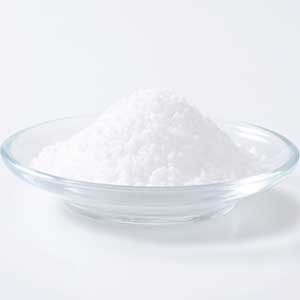
News
Jūl . 25, 2024 06:51 Back to list
Exploring the Effects of Citric Acid as a Chelating Agent on pH Levels in Solutions
The Role of Citric Acid as a Chelating Agent Understanding pH Interactions
Citric acid, a natural organic acid found in citrus fruits, is widely recognized for its versatility and efficacy as a chelating agent. Chelation involves the formation of stable complexes between metal ions and organic molecules, which can enhance the solubility and bioavailability of these metals in various applications. This article explores the significance of citric acid as a chelating agent and delves into its interaction with pH levels.
Understanding Chelating Agents
Chelating agents are substances that can form multiple bonds with a single metal ion. This property is critical in various industries, including agriculture, medicine, and environmental science. By binding to metal ions, chelating agents can prevent these ions from precipitating or forming insoluble compounds, enhancing their mobility and reactivity. Common chelating agents include EDTA (ethylenediaminetetraacetic acid) and citric acid. While EDTA is synthetic, citric acid is a natural compound, making it particularly appealing for environmentally friendly applications.
Citric Acid Dynamics in Chelation
Citric acid’s chelating capability is primarily attributed to its three carboxylic acid groups (-COOH) and one hydroxyl group (-OH). These functional groups can donate lone pairs of electrons, allowing citric acid to interact with various metal ions, such as calcium, magnesium, iron, and copper. The ability to form stable complexes with these metals is influenced by the pH of the environment.
The Impact of pH on Chelation
pH plays a crucial role in the effectiveness of citric acid as a chelating agent. At low pH levels (acidic conditions), citric acid remains predominantly in its protonated form, reducing its ability to bind with metal ions. As the pH increases (becoming more alkaline), citric acid begins to deprotonate, resulting in more negatively charged species that can more effectively interact with metal ions. This shift enhances the chelation process, making citric acid particularly effective in slightly alkaline conditions, often found in agricultural settings.
citric acid chelating agent ph quotes

Furthermore, the solubility of metal-citric complexes is affected by the pH of the solution. In more alkaline environments, there is a heightened solubility of certain metal complexes, facilitating better nutrient availability. For instance, in soil chemistry, the presence of citric acid can help solubilize essential nutrients for plant uptake, thus promoting healthier plant growth and improving agricultural yields.
Applications of Citric Acid in Various Fields
1. Agriculture The use of citric acid in fertilizers enhances nutrient availability to plants, particularly in soils with high metal content, ensuring that essential nutrients like iron and magnesium are accessible for root uptake.
2. Food Industry Citric acid also acts as a natural preservative, helping to chelate trace metals that can catalyze spoilage reactions, thereby extending the shelf life of food products.
3. Medicinal Applications In pharmaceuticals, citric acid can stabilize metal-containing drugs, thereby enhancing their efficacy and safety.
4. Environmental Remediation Citric acid is employed in bioremediation strategies to mobilize heavy metals from contaminated sites, making it easier to clean up polluted environments.
Conclusion
Citric acid serves as an exceptional chelating agent due to its effectiveness and natural origin. The interaction between citric acid and metal ions is significantly influenced by pH, making it essential to consider the environmental conditions in which it is utilized. As industries increasingly shift towards environmentally sustainable practices, citric acid's role as a chelating agent will likely expand, offering innovative solutions across agriculture, food preservation, medicine, and environmental science. Understanding the chemical dynamics of citric acid at varying pH levels is crucial for optimizing its application and realizing its full potential as a multifunctional agent.
-
Polyaspartic Acid Salts in Agricultural Fertilizers: A Sustainable Solution
NewsJul.21,2025
-
OEM Chelating Agent Preservative Supplier & Manufacturer High-Quality Customized Solutions
NewsJul.08,2025
-
OEM Potassium Chelating Agent Manufacturer - Custom Potassium Oxalate & Citrate Solutions
NewsJul.08,2025
-
OEM Pentasodium DTPA Chelating Agent Supplier & Manufacturer High Purity & Cost-Effective Solutions
NewsJul.08,2025
-
High-Efficiency Chelated Trace Elements Fertilizer Bulk Supplier & Manufacturer Quotes
NewsJul.07,2025
-
High Quality K Formation for a Chelating Agent – Reliable Manufacturer & Supplier
NewsJul.07,2025
